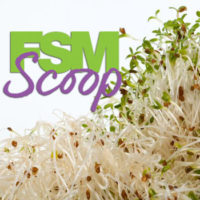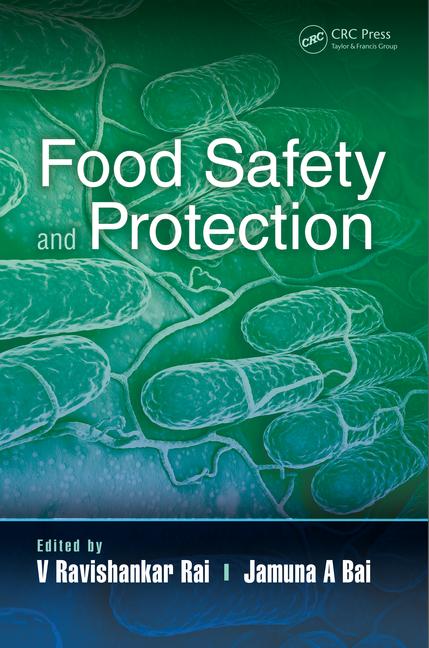FSM Scoop: Raw Milk

In the 1980s, a series of TV commercials sparked the popular tagline “Milk Does a Body Good” after the dairy industry--suffering from a sales decline--launched a massive ad campaign. Years later, milk marketers reinvented the wheel with memorable “Got Milk?” ads showcasing celebrities and athletes with milk mustaches. The campaigns were all about promoting the health benefits of drinking milk. But times have changed. With information just a click away, consumers have the upper hand in choosing what they want and how they want it. This includes making a choice when it comes to milk and whether or not they want it fresh from the farm.
Raw Milk 101
The U.S. Centers for Disease Control (CDC) defines raw milk as “milk from cows, goats, sheep, or other animals that has not been pasteurized.” Pasteurization is the process of heating and boiling milk, which ultimately kills bacteria and pathogens. Raw, unpasteurized milk contains harmful bacteria. By drinking it, consumers put themselves at risk for a number of foodborne illnesses and even death. Despite it being such a hot topic, unpasteurized milk accounts for less than 1 percent of all milk sold to consumers in the U.S. [1]
There are many ways that milk can become contaminated during the milking process--via urination, defecation, pre-existing animal diseases and infections, dirty processing equipment, insects, or cross-contamination caused by humans are most of them. Pasteurization has always been the only sure way to rid milk of these impurities. In fact, in the early 1900s pasteurization was one of the reasons why foodborne illnesses like typhoid and scarlet fevers--both related to milk consumption--took a sharp nosedive. [2]
Does Raw Milk Do a Body Good?
Despite the proven health risks, raw milk advocates--largely concerned parents, vegetarians and organic food enthusiasts--are fervently adamant about the perceived benefits. Raw milk contains a number of natural antibodies, proteins and bacteria. Proponents also deem it wholesome, healthier, cleaner and better tasting. Finally, raw milk is said to help some people with reducing levels of lactose intolerance and certain allergies. However, there is plenty of proof that the negative consequences far outweigh the benefits. [3, 4]
Raw Milk Recalls
According to data reported by the CDC between 1998 and 2011, raw milk (or cheese) caused [5]:
- 79 percent of reported foodborne illnesses
- 148 outbreaks, predominantly among children and teens
- 2,384 illnesses (Escherichia coli, Campylobacter, Salmonella and Listeria)
- 284 hospitalizations
- 2 deaths
The last year alone has also seen its fair share of raw milk health scares.
In Idaho last summer, the CDC reported that 11 individuals fell ill with cryptosporidiosis originating from raw goat’s milk contaminated with feces. [6]
In early 2015, the Pennsylvania Agricultural Department put a stop to raw milk sales at a rural creamery after test samples came back positive for Campylobacter. At the time, the state’s health department had not reported any illnesses associated with raw milk purchased from the creamery. [7]
Just this spring, three children under age 5 were sickened with campylobacteriosis after consuming raw goat’s milk from Claravale Farm of San Benito County, CA. One of the children was hospitalized, but all were expected to recover from the foodborne illness. [8]
The Pasteurized Milk Ordinance
The Pasteurized Milk Ordinance (PMO) sets the national scientific standard for the high quality production, processing, packaging and sale of “Grade A” milk products--the only kind that can be sold to consumers under federal law--in the U.S. It exists to help prevent what are known as milk-borne outbreaks. Still, it is up to each individual state whether they adopt the PMO, or choose to enforce their own milk safety laws. States that adopt the PMO agree that they will adhere to the set preventive control requirements, thus relinquishing their right to set additional or separate regulations. [9]
Who’s Got Raw Milk?
 To simply declare which states do and do not allow the sale of raw milk would be misleading. That’s because each state varies greatly, many having implemented their own laws on how to handle selling (or not selling) raw milk to their residents. The U.S. Food and Drug Administration (FDA) first banned the distribution and sale of raw milk across state lines in the 1980s. Although this federal law still exists, it does not prohibit individual states from producing and selling raw milk within their state. [10]
To simply declare which states do and do not allow the sale of raw milk would be misleading. That’s because each state varies greatly, many having implemented their own laws on how to handle selling (or not selling) raw milk to their residents. The U.S. Food and Drug Administration (FDA) first banned the distribution and sale of raw milk across state lines in the 1980s. Although this federal law still exists, it does not prohibit individual states from producing and selling raw milk within their state. [10]
So, how much do in-state raw milk laws really differ?
Last fall, Vermont’s Agency of Agriculture Food & Markets began cracking down on the testing protocols of raw milk. If milk samples exhibit higher than desired levels of bacteria, raw milk farmers are required to call all their customers and disclose this information. If a second round of tests also yields too much bacteria, the farm can be shut down for good. Farmers and their advocates believe that the government’s stringent rules are a strategic tactic aimed at pushing small businesses out of the booming food industry. However, state officials stand strong on their objective to strengthen food safety laws in an effort to prevent foodborne outbreaks and the spread of pathogens. [11]
Further south in West Virginia, the state does not permit the direct sale of raw milk to consumers. However, the state did join a herd sharing (or cow sharing) movement in March. This allows state residents to enter a joint agreement with a local farmer, purchase shares of a cow and pay to have that cow cared for and milked. After signing a contract stating they are aware of the possible health risks, the resident is then free to buy raw milk from the cow they invested in. Similar programs are also in place in Arkansas, Delaware, Indiana, Michigan, North Dakota, Ohio and Virginia. This middle ground offers exactly what raw milk advocates want--the freedom to choose. [12]
In Maine, the sale of raw milk directly to consumers is permitted, as long as it’s sold by an authorized, licensed farmer. Raw milk is also widely available for sale to residents in California, Connecticut and Pennsylvania. [13]
More examples of states’ unique raw milk regulations [14]:
- Massachusetts and New York: raw milk must be purchased from a licensed farm
- Illinois and Kansas: it’s OK to buy raw milk from an unlicensed farm
- Alabama and Florida: raw milk is only OK to buy for your pet, not for human consumption
- Pennsylvania: farmers can sell raw milk if they have the proper permit, and if they consent to government inspections
- Hawaii, Iowa, Louisiana, Maryland, Montana, New Jersey, North Carolina: the sale of raw milk is completely illegal
Raw Milk Around the World
Frowns upon the consumption of raw milk is not restricted to the United States. The Australia and New Zealand Ministerial Forum on Food Regulation has expressed “extreme concern” about unpasteurized cow’s milk--a product that is sold as “bath milk” or “cosmetic milk” with disclaimers warning consumers that it is not recommended for human consumption. Still, consumers are guzzling the product, believing that any bacteria or enzymes present in raw cow’s milk is safe and beneficial to one’s health, not to mention they believe it tastes better. Reportedly there has been one toddler death and at least four children were hospitalized in December 2014 after consuming raw milk. Because of its extreme risk to human health, officials are working to have the product banned from local health food stores. [15]
As of February 1, 2015 regulations in the Australian state of Victoria require that raw milk must contain a “bittering agent” after that toddler died. The agent is said to make the milk undrinkable. But that hasn’t stopped one farmer from continuing to sell unpasteurized milk--an illegal act in Australia--because he doesn’t believe the child’s death had anything to do with raw milk. According to the farmer, he is selling his milk as a “cosmetic skin treatment” and doesn’t believe he should be held liable if his customers choose to drink it instead. The farmer is ready to go to court against Victorian health officials, forcing them to prove that he’s been selling raw milk as a consumable food item. The sale, delivery and serving of “untreated dairy food” for human consumption is eligible for a fine of up to $59,000. [16]
For a while in England, Wales and Northern Ireland, raw milk could not be sold by retailers or supermarkets, but selling directly to consumers has been permitted. After reviewing the regulations that control the sale of raw milk, the Food Standards Agency (FSA) just announced last week that they would maintain those same restrictions. Specifically, the FSA felt that making any changes to the restrictions already in place because consumer protection might be at risk if the market for raw milk were to be expanded. [17]
Elsewhere, the Food Safety Authority of Ireland (FSAI) recommends that the sale of raw milk for human consumption be prohibited within the country. They insist that the best way to protect human health is to ensure that raw milk is either pasteurized or boiled prior to consumption--particularly for infants, children, pregnant women, older persons and people with weakened immune systems. These suggestions were publicized after the FSAI conducted a microbiological survey that found traces of Listeria monocytogenes and Campylobacter in under 10 percent of raw milk samples, but over 20 percent of filters used during the milking process. Smaller amounts of Salmonella and Escherichia coli were also detected. [18]
Similarly, the European Food Safety Authority (EFSA) has concluded that raw milk can be a source of harmful bacteria, urging consumers to avoid it because it is dangerous. Out of nearly 30 milk-borne outbreaks in Europe, nearly all of them were traced back to raw cow’s milk. [19]
Studying the Effects of Raw Milk
New research released in March by the Johns Hopkins Center for a Livable Future (CLF) further strengthens the argument against raw milk consumption. The study--which combed over 1,000 articles and 81 scholarly journal articles--was prompted by officials in Maryland as the state ponders whether or not they should loosen up on laws prohibiting the sale of raw milk. Researchers at Johns Hopkins found that by drinking unpasteurized cow’s milk, “consumers are nearly 100 times more likely to get [a] foodborne illness” versus drinking pasteurized milk. The research also found that even though only 3.5 percent of the U.S. population even drinks raw milk, it is responsible for more than half of all milk-related foodborne diseases. [20]
Benjamin Davis, a CLF-Lerner Fellow, doctoral candidate and lead author of the Johns Hopkins report says, “Ultimately, the scientific literature showed that the risk of foodborne illness from raw milk is over 100 times greater than the risk of foodborne illness from pasteurized milk. Although potential benefits related to the consumption of raw milk would benefit from further investigation, we believe that from a public health perspective it is a far safer choice to discourage the consumption of raw milk.”
The debate over raw vs. pasteurized milk is sure to continue as consumers fight for their right to choose and states refine their own regulations over sales. What’s more--if the demand for raw milk continues to increase--dairy manufacturers will have to figure out new ways to produce both raw and pasteurized milk in the same facility without the risk of cross-contamination. In the meantime, the dairy industry--along with state legislatures--have provided consumers with plenty of resources to help make informed decisions concerning raw milk.
References
1. http://www.cdc.gov/foodsafety/rawmilk/raw-milk-questions-and-answers.html#rawmilk
2. http://www.today.com/health/raw-milk-fans-cheer-looser-state-laws-it-safe-2D80550374
3. http://www.jhsph.edu/news/news-releases/2015/Drinking%20Raw-milk-dramatically-increases-risk-for-foodborne-illness-analysis-finds.html
4. http://www.food-safety.com/enewsletter/is-raw-milk-increasing-risk-in-our-food-supply/
5. http://www.today.com/health/raw-milk-fans-cheer-looser-state-laws-it-safe-2D80550374
6. http://www.cdc.gov/mmwr/preview/mmwrhtml/mm6407a9.htm?mobile=nocontent&s_c
7. http://fox43.com/2015/02/06/consumers-told-to-discard-raw-milk-from-adams-county-dairy/
8. http://www.foodpoisonjournal.com/foodborne-illness-outbreaks/raw-goats-milk-linked-to-three-in-california-with-campylobacter/#.VX8jlhNViko
9. http://www.fda.gov/downloads/Food/GuidanceRegulation/UCM209789.pdf
10. http://www.today.com/health/raw-milk-fans-cheer-looser-state-laws-it-safe-2D80550374
11. http://digital.vpr.net/post/raw-milk-producers-say-state-regulations-are-prohibitive
12. http://www.today.com/health/raw-milk-fans-cheer-looser-state-laws-it-safe-2D80550374
13. http://www.today.com/health/raw-milk-fans-cheer-looser-state-laws-it-safe-2D80550374
14. http://www.realmilk.com/state-updates/
15. http://www.dailytelegraph.com.au/news/nsw/raw-milk-could-face-national-ban-after-recommendation-from-forum/story-fni0cx12-1227203905839
16. http://www.heraldsun.com.au/news/victoria/warrnambool-farmer-swampy-marsh-refuses-to-stop-selling-unpasteurised-milk-at-market/story-fnpp4dl6-1227397679303
17. http://www.foodsafetynews.com/2015/07/current-uk-controls-on-raw-milk-found-sufficient/#.VakCSZNViko
18. https://www.agriland.ie/farming-news/raw-milk-found-to-contain-harmful-bacteria-food-safety-authority/
19. http://www.food-safety.com/news/european-authorities-advising-against-raw-milk-consumption/
20. http://www.jhsph.edu/news/news-releases/2015/Drinking%20Raw-milk-dramatically-increases-risk-for-foodborne-illness-analysis-finds.html
Looking for a reprint of this article?
From high-res PDFs to custom plaques, order your copy today!








